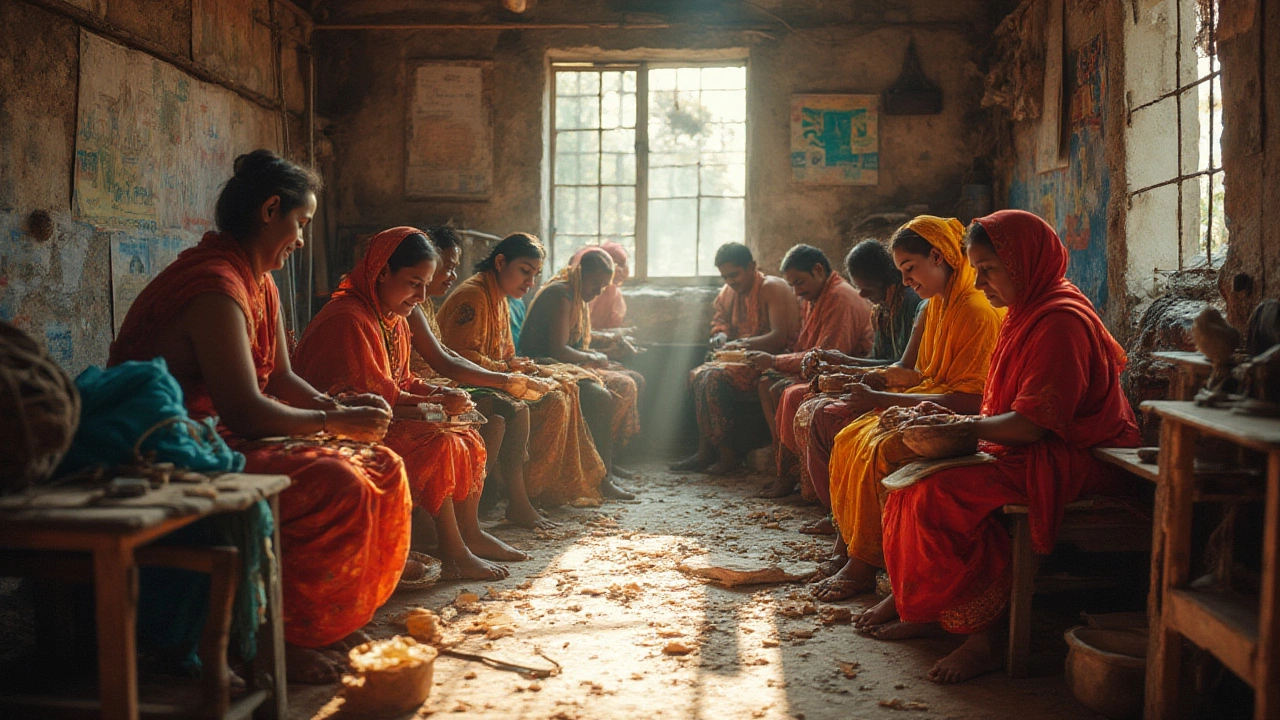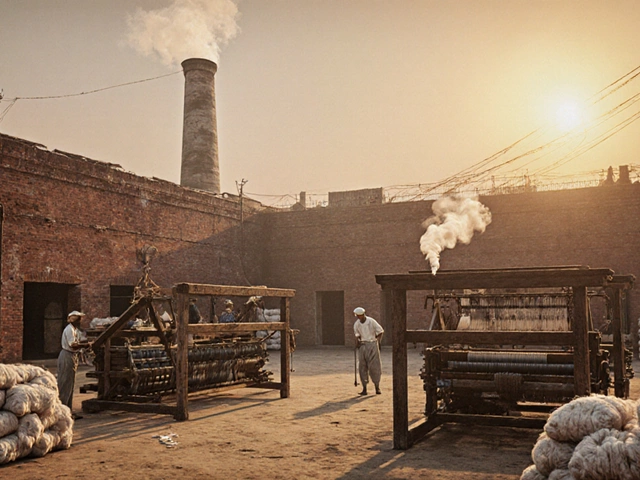Picture a small workshop in a buzzing town, a handful of determined folks weaving magic amid the hum of machines and the thud of tools. Small scale industries might not be glamorous or headline-grabbing, but their impact can be felt in every corner of the world. They’re the quiet backbone of communities, turning big dreams into tangible products with limited resources. Their story isn’t just about survival; it’s about transformation—of people, neighborhoods, and even economies. So, what exactly draws so much focus to these humble but mighty enterprises? Let’s crack into it.
The Role of Small Scale Industries in Economic Growth
The magic of small scale industries lies in their power to create jobs fast. Seriously—according to the International Labour Organization, these businesses provide work for up to 70% of jobs in developing economies. In countries like India, they make up nearly half of industrial production and about 40% of exports. That’s not a typo; that’s a jaw-dropper. Local governments often bet on these industries because they can soak up workers that bigger factories or fancy corporations might overlook. Think: the dad-turned-carpenter, the former farmhand now sewing uniforms, the fresh grad running a micro-bakery in his garage.
And it’s not just about jobs. These industries help keep cash circulating within communities, making it less likely that wealth will leak away to far-flung corporate shareholders. When money stays local, neighborhood shops thrive, people invest back into homes and schools, and the whole area feels alive. According to the World Bank, regions with vibrant small industries often have lower poverty rates and better access to basic services.
Even more interesting? Small scale manufacturing can act as a buffer when big economic shocks hit. During the pandemic, many big industries ground to a halt—but small local outfits found ways to pivot, like textile units that started producing masks overnight. Their sheer nimbleness is an economic superpower.
Innovation and Adaptation: Why Small Scale Wins the Agility Game
Innovation isn’t always about some Silicon Valley start-up rolling out self-driving scooters. Sometimes, it’s the dairy owner in a small town figuring out how to keep milk fresher during power cuts, or the toy-maker teaching neighbors how to carve out new designs on slower days. Here’s a wild fact: a study by the Organisation for Economic Co-operation and Development found that small-scale companies are about 50% more likely per employee to file patents compared to larger firms. Their size lets them experiment quickly, and (unlike big companies) they don’t drown in red tape before trying new ideas.
One core focus is solving real problems right there in the community. Take, for example, rainwater harvesting gadgets or biodegradable packaging. These aren’t just good for the planet—they sprang from necessity and creativity, spurred by people who know local needs first-hand. Small scale industries excel at identifying micro-gaps in the market and jumping in with tailor-made solutions. They don’t wait for trends to trickle down; often, they create new ones from scratch.
Nobody wants to see jobs lost to automation, but here’s another side: small industries often blend old-school skills with modern tools, adding a layer of resilience bigger firms sometimes lack. The fusion of handcraft with small-batch tech is shaping everything from boutique chocolates to eco-friendly shoes—making each product unique and locally-sourced.

Supporting Local and Sustainable Production
Ever met anyone who brags about their love for generic, mass-produced stuff? Didn’t think so. Small scale businesses thrive because people crave genuineness—fresh bread from the neighborhood bakery, custom furniture, organic skincare products. These things come with a story, a face, and a place you know.
Sustainability isn’t just trendy lip service. Small business owners are some of the best at minimizing waste, reusing materials, and cutting out meaningless packaging. When you’re running on a shoestring budget, every gram of material counts. According to a 2023 survey by the International Trade Centre, over 60% of small manufacturers reported that sustainable business practices (like cutting waste and using renewable sources) made them more competitive and improved their brand image with customers.
This local focus pays off in other ways. When products don’t travel halfway around the globe, their carbon footprint shrinks. Plus, locally-owned small industries are more accountable to their neighbors. If they pollute the river or use shady labor, it’s not a faceless corporation—it’s your neighbor next door, and that pressure keeps businesses honest.
Small scale industries also serve as keepers of tradition. From handwoven textiles to ancient cheese recipes, they pass down crafts from one generation to the next, preserving cultural heritage that might otherwise fade out in the global race to sameness.
Overcoming Challenges: Access to Credit, Technology, and Talent
No sugar-coating it—life isn’t always easy for small business owners. Banks can be wary about giving loans to folks without tons of collateral. Global data from the SME Finance Forum in 2024 showed a $5 trillion financing gap worldwide for small and medium-sized enterprises. That’s a mountain to climb for anyone wanting to buy new equipment or expand the shop floor.
Tech upgrades are another pinch point. It’s tough to buy a shiny new 3D printer if you’re just covering the rent. Many small outfits get creative—sharing resources, pooling equipment, or snagging used gear off online marketplaces. Some local governments and NGOs step in with tech training sessions or subsidized machines, but there’s a lot of ground left to cover.
Talent can be tricky too. Unlike big companies that can dangle gym memberships or stock options, small players usually rely on family ties or old-school trust. Ironically, this sometimes sparks better loyalty—but it also means most folks wear lots of hats. A manager might double as driver, accountant, and customer service rep. It’s an all-hands-on-deck game.
| Challenge | Percentage Facing This Issue (2023) |
|---|---|
| Access to finance | 77% |
| Access to markets | 68% |
| Technology adoption | 52% |
| Finding skilled workers | 54% |
Despite these headaches, a surprising number of businesses succeed by getting creative. Joint marketing campaigns, local sourcing groups, and offering unique services help level the playing field. Getting involved in local business associations or chambers of commerce can open surprising doors for both support and information. Some enterprising folks even tap into crowdsourcing or social impact grants to fill in financial gaps.

Keys to Thriving: Tips for Maximizing Impact and Staying Competitive
If you’re thinking of diving into small scale manufacturing—or already grinding away—there are a handful of hard-won lessons many successful folks share. Staying nimble is absolutely crucial. The best businesses keep their ear to the ground, adjusting products and services as local needs shift. My neighbor flipped his leather workshop to start making pet collars and harnesses (Rusty the cat still refuses to wear his, but hey—it sells!).
Building strong ties within your community pays back a hundredfold. Word-of-mouth is powerful, especially if you’re genuine and willing to customize for regulars. Hosting workshops, giving apprenticeships to local kids, or just being the friendly face at the farmer’s market all raise visibility and loyalty.
- Team up with nearby businesses to cut costs on shipping and packaging.
- Tap into government grants or micro-loans designed for start-ups and rural enterprises.
- Offer something with a dash of your personality—quirky packaging, customized designs, or a local flavor.
- Keep learning—train up your team, explore online courses, or invite guest experts to show everyone the ropes.
Another under-the-radar trick? Selling online. The number of small outfits opening up local delivery and webshops has exploded since 2022, with many seeing a jump in monthly sales by 30% or more just by going digital. Social media is your friend here—when your story resonates, people are more likely to support your business.
Here’s a parting thought: as supply chains grow more unpredictable, communities will lean harder on small local manufacturers who know their markets. The focus on small scale industries isn’t just about filling gaps left by corporate giants—it’s about building self-reliant, sustainable ecosystems where people (and sometimes stubborn cats like Rusty) can thrive.






